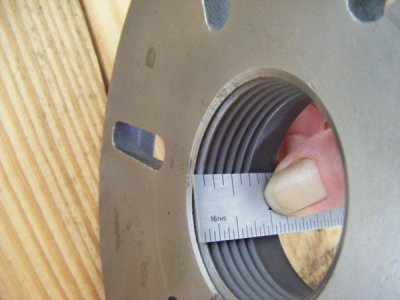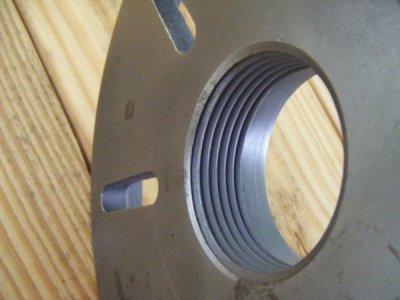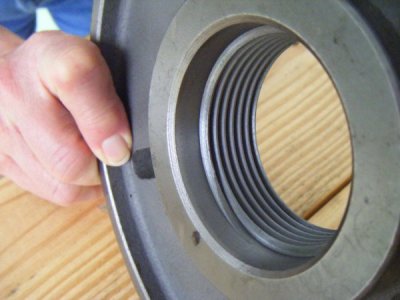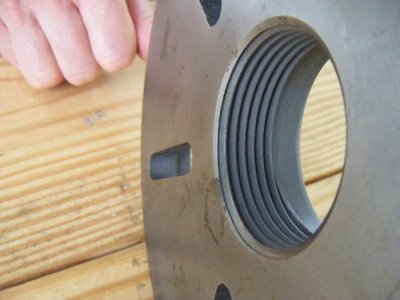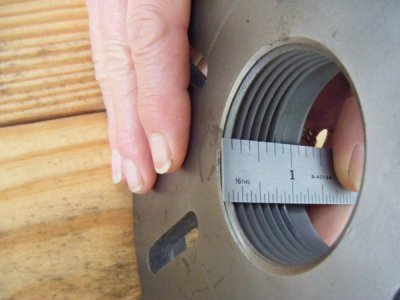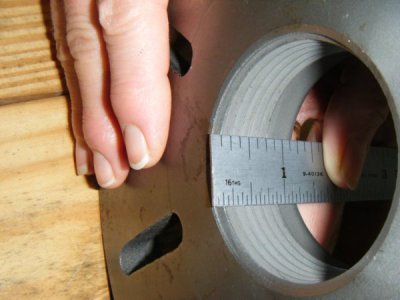- Joined
- Mar 18, 2011
- Messages
- 243
If I understand your post correctly you have a lathe with a 2 1/4-8 threaded spindle nose.
You then turned a 2 1/4-8 plug gauge which works with a new internally threaded part yet not an old internally threaded face plate of the same thread?
Am I on the right track so far?
Yes, sort of. Except my lathe doesn't matter in this case as I am using the faceplate for a welding positioner but bought a 2 1/4 - 8 threaded faceplate and threaded backplate for the project. I bought the faceplate based on size of threads as advertised on ebay in October of 2016 and it has been sitting in a box since so I never had anything to test it with or any reason to doubt the threads. I have taken a few pics but my battery is on the charger at the moment. The two plates (backplate and faceplate) were bought and I just machined the male adapter to screw into them and one works, one does not.
Last edited:


